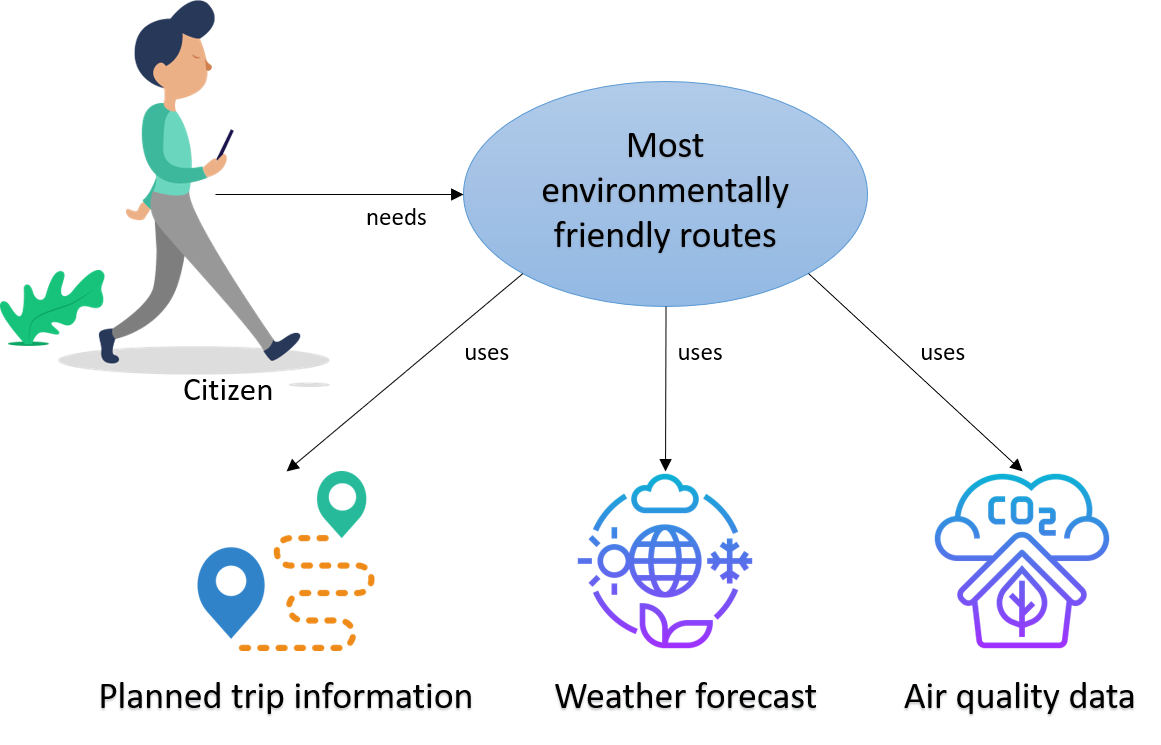This conceptual example describes the River City initiative related to the environmentally friendly routes for its citizens as follows. Fig 1 depicts how for someone who is planning a road trip, the system should merge the planned trip information with the weather forecast and air quality data, consequently suggesting that the user bring an umbrella and take the route with the least air pollution.

The Head of the Smart City Strategy in River City plans to improve the use of data for informed decision making and for supporting innovation. He decides to implement a Smart City initiative related to the most environmentally friendly routes.
The Enterprise Architect of the project needs to understand the initiative and align a technological solution with the strategic plan. The architect also must identify the main stakeholders and their requirements to design the solution. He is concerned with architecture issues, such as (i) how smart services support city goals and objectives (ii) how smart services are deployed onto application components (e.g. information services, application modules, or other deployable components of functionality) (iii) how are application components deployed onto technology components (iv) how to integrate the different platforms and technologies, etc.
Citizens are the final users of the services. They concern on specific issues, such as (i) find in their mobile applications the best route to walk and commute in the city (ii) improve their health and in general the quality of life.
